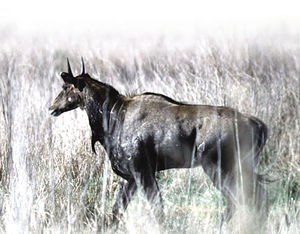HARLINGEN — The two-day cull of nilgai in the northern part of Laguna Atascosa National Wildlife Refuge last month resulted in the removal of 81 antelope.
Boyd Blihovde, refuge manager, said yesterday 50 antelope were taken by sharpshooters in helicopters on July 21, and another 31 nilgai were shot the next day.
“These same type harvests have been done in other areas in the Valley,” Blihovde said. “The prioritization of nilgai harvesting is due mostly to the fever tick infestation that we have going on.”
The reduction of non-native nilgai numbers became an issue in 2014 when the U.S. Department of Agriculture discovered cattle fever ticks in Cameron County and established a temporary quarantine area. A permanent cattle fever tick quarantine area hugs the border from Del Rio to the Gulf of Mexico.
The refuge finds itself squarely in the middle of the temporary quarantine area zone that covers 223,000 acres in Cameron County.
Nilgai are carriers of the fever tick and are a non-native, introduced species. That being the case, regulations of the U.S. Fish and Wildlife Service which operates the nation’s wildlife refuges prioritize protecting and nurturing only native animal and plant species.
An earlier four-day hunt on the refuge’s Bahia Grande Unit near Port Isabel removed 186 nilgai, Blihovde said.
The number of nilgai removed from the two units of Laguna Atascosa was far higher than a similar cull in 2015 at the Lower Rio Grande Valley National Wildlife Refuge’s Boca Chica Unit to the south.
At Boca Chica, just eight nilgai were removed.
“And that’s not because they weren’t trying, it’s just that they have fewer animals there,” Blihovde said.
The nilgai from the two-day July harvest at Laguna Atascosa were processed by Trinity Oaks, a nonprofit food charity based in San Antonio.
Nilgai bulls can weigh up to 600 pounds, and although the refuge has annual permit hunts for nilgai, white-tailed deer and feral hogs, many hunters pass on the nilgai because they are so difficult to process once harvested.
Blihovde said the two-day hunt on Unit 4 resulted in 24,000 pounds of nilgai meat being ground into hamburger by Trinity Oaks for distribution to the needy in the Rio Grande Valley and elsewhere.




